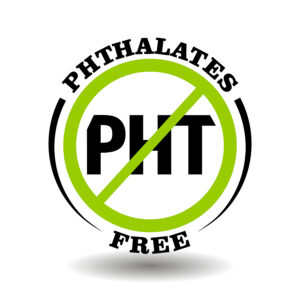Hundreds of consumer products contain a chemical that kills. Notably, these chemicals have the name phthalates. Certainly, researchers know that phthalates are hormone disruptors. Another hormone disruptor is bisphenol A or BPA. This chemical became famous as BPA was part of baby bottles to soften the plastic material. Now manufacturers switched to BPA-free baby bottles. But there are many hormone disruptors such as phthalates that are part of everyday life. It is important to realize that they are hiding in vinyl flooring, PVC plastic pipes, food packaging, clothing, detergents, furniture, garden hoses and many other products. Specifically, a recent study showed that phthalates can kill people prematurely by causing heart attacks.
Details of phthalates causing cardiovascular problems
Indeed, in the past plasticizers like phthalates were thought to be mainly hormone disruptors. They caused fertility problems and adverse developmental effects. Surprisingly, since the 2000s researchers noted that they were instrumental in causing obesity, type 2 diabetes and cardiovascular disease. Another key point, phthalates can be absorbed through the skin, ingested by mouth or inhaled. In order to understand how phthalates cause cardiovascular disease, we need to investigate the effects of phthalates on fatty tissue. Phthalates have a negative effect on fatty tissue that leads to adipose tissue dysfunction. Fat cells develop out of adipose stem cells committing themselves and maturing into fatty cells that can store lipids. This process has the name adipogenesis. When this process is insufficient, expansion of fatty tissue relies on hypertrophy of fat cells.
Adipose tissue dysfunction
Hypertrophy of fat cells leads to spillover of lipids into the general circulation. Engorged hypoxic fat cells do no longer respond to the anti-lipolytic effect of insulin, they are insulin resistant. Exposure to phthalates during pregnancy caused a twofold increase in childhood obesity. In the adult population exposure to phthalates can disrupt the balance between fat cells and progenitor fat cells unfavorably. Mature fat cells produce hormone-like substances with the name of adipocytokines. They regulate the energy balance, appetite, lipid and glucose metabolism, insulin sensitivity and inflammation. Phthalates disrupt this intricate hormonal balance and cause insulin resistance, hyperlipidemia and chronic inflammation. The end results are heart attacks and strokes.
Recommendation how to minimize exposure to BPA or phthalates
The following recommendations help to minimize phthalate exposure.
- Avoid microwaving food or drinks in plastic.
- Avoid canned and processed foods as much as you can. Buy fresh fruit and vegetables whenever possible.
- Use beauty and skin care products that do not contain phthalates or fragrances.
- Store food and drinks in non-plastic containers, such as glass, ceramic or stainless steel.
- Stay away from buying vinyl products.
- Do not pour hot liquids into plastic containers. Throw away older plastic containers that may contain BPA.
- Buy products that are labeled BPA free and phthalate free.
- Chose the safer plastics labeled 1, 2, 4 or 5. Avoid buying 3 (PVC or vinyl), 6 (polystyrene foam), or 7 (may contain BPA).
Conclusion
Hundreds of consumer products contain a chemical that kills. Phthalates belong into the group of hormone disruptors as does bisphenol A or BPA. Phthalates cause fertility problems and adverse developmental effects. But in a recent publication a new effect was described, namely that they can cause cardiovascular disease. Exposure to phthalates can disrupt the balance between fat cells and progenitor fat cells unfavorably. Mature fat cells produce hormone-like substances with the name of adipocytokines. They regulate the energy balance, appetite, lipid and glucose metabolism, insulin sensitivity and inflammation. Phthalates disrupt this intricate hormonal balance and cause insulin resistance, hyperlipidemia and chronic inflammation. The end results are heart attacks and strokes.







